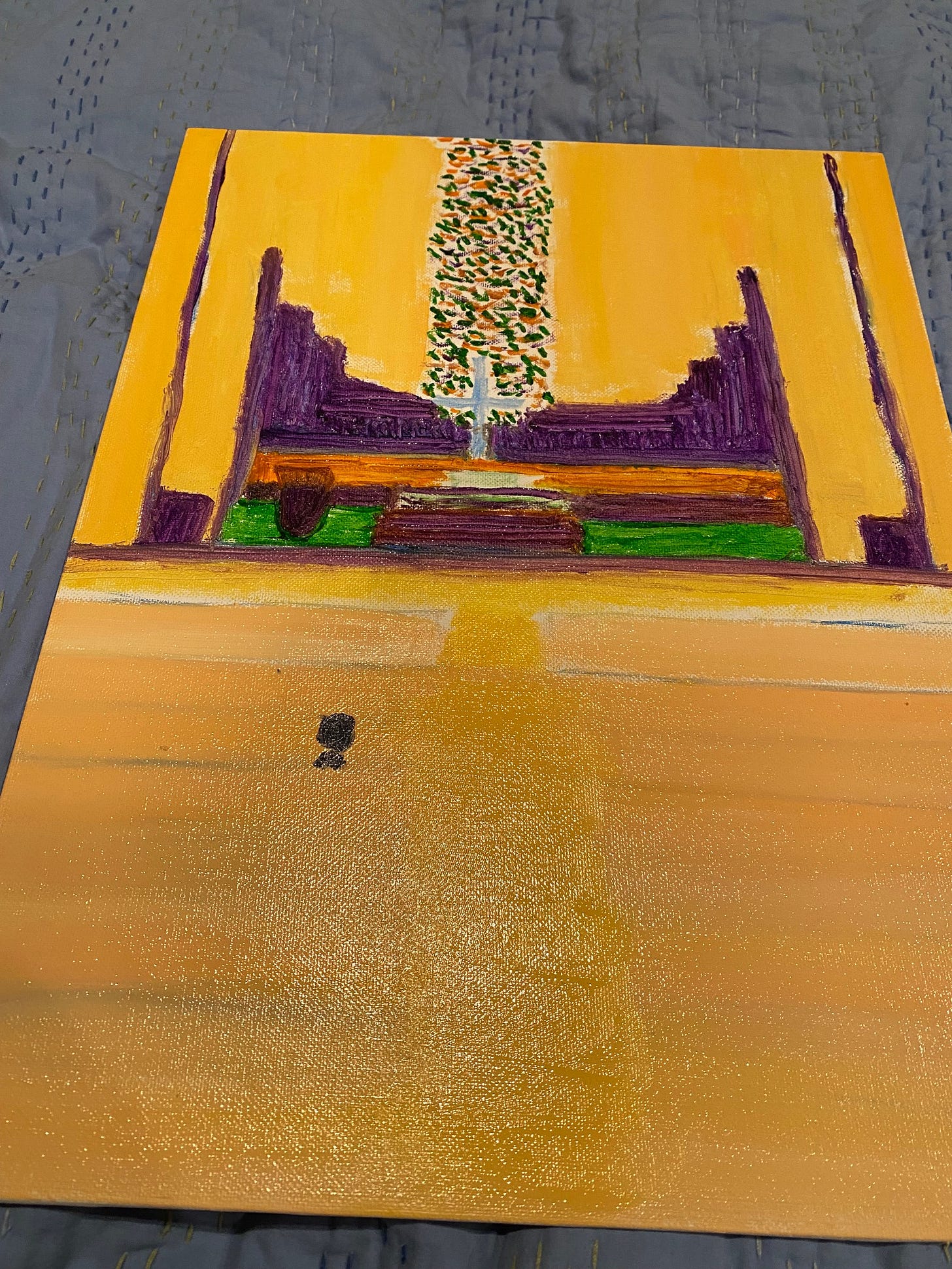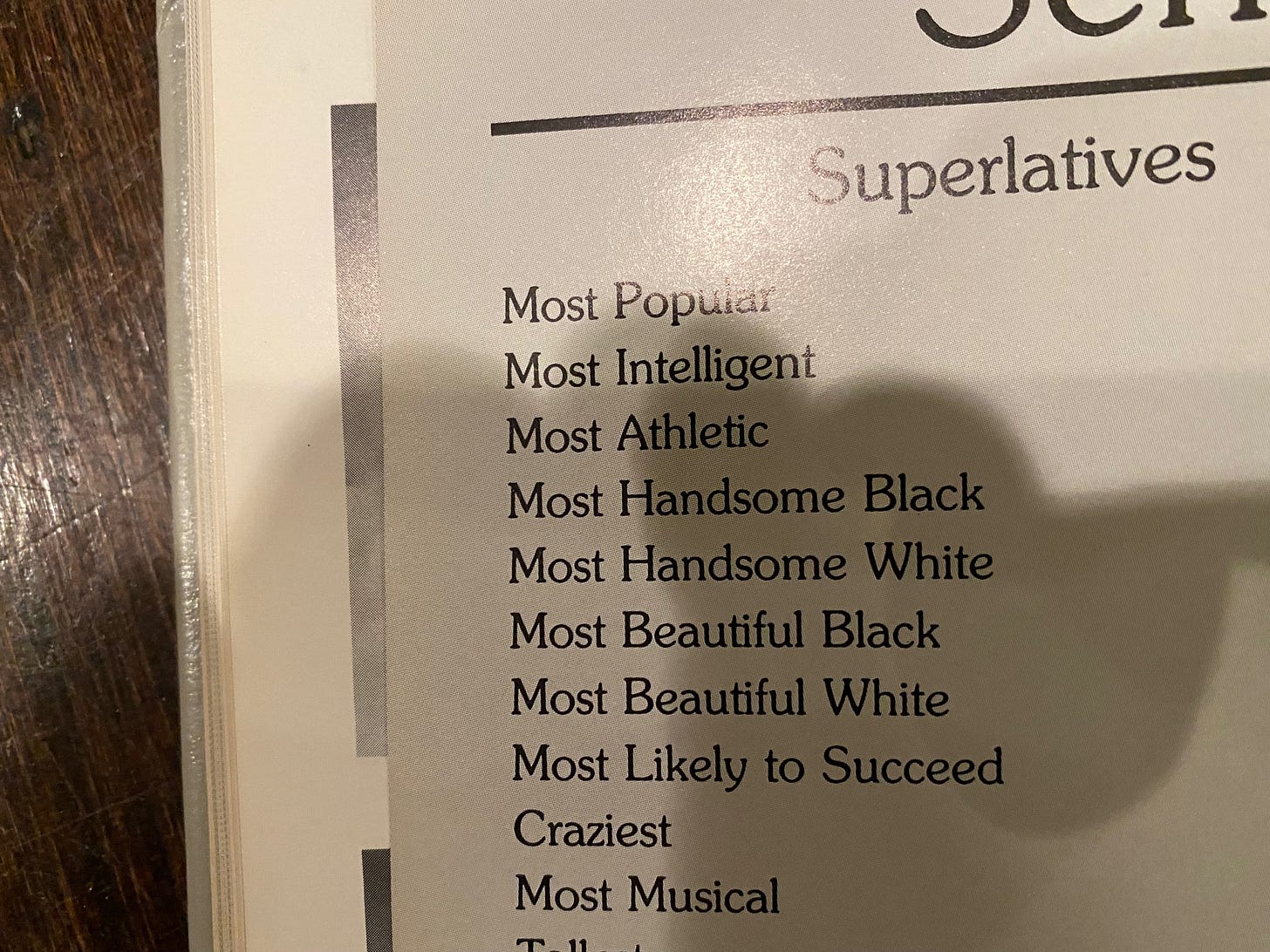A rhythm of my life as a teenager was navigating Church, or really a series of Churches: one in Goldsboro, NC my hometown, one in Raleigh, NC where my dad, step mom and step brothers lived, and one in Greene County, NC where I spent summers with my Grandparents. There were very few weeks that I was not in at least one of these, and different images linger from each.
Below is an oil on canvas painting of me looking down on the First Presbyterian Church sanctuary in Goldsboro, NC. My mother sang in the choir and if she saw my step dad sitting in the pews without me, she would crane her neck and peer up into the balcony to ensure that I was there, in that less preferred by her, but acceptable place of worship along with my friend Will Lingo.
It is often said that the most segregated hour of the week is Sunday, 11am, and the image of a lone Black man, sitting near the front of the pews, on the left side of First Pres Goldsboro is one image that sticks with me. I do not remember his name, but since there was one Black man who came most every week and there was no riot, nor any words that I heard said about it in the early 1980s, it was at least theoretically possible that an integrated Church could have existed then and there even if it could not have 20 years before that.
Our brains translate so much from images and glimpses.
The image below is from the GOHISCA, the Goldsboro High School Year book in 1986, my Senior Year. As the class of 1986 adjudicated a series of senior superlatives, most were not racialized, but two categories were (cutest Black and cutest White couple were also identified later in the list; not pictured).
Why did the judging of relative beauty require separate honorees, Black and White, but others did not?
There is an essential visual aspect to the concept of Race that was woven deeply into me growing up in Eastern, North Carolina, with the fundamental divide being Black and White. This old heuristic of separation was thoughtlessly activated inside my head on a beautiful afternoon several months back as I walked past some teenage boys playing basketball. Some were Black and some were White, a normal scene in Durham, NC in 2021. As I watched the boys play, my eye kept returning to one player and an internal question “is he Black or White?” flooded into my mind (acrylic on canvas below). As I actively thought to myself “who cares!?” the obvious answer hit me—”my brain does” because it was taught to see the world in Black and White. Not taught in the sense of explicit instruction, but by the racialized society in which I grew up. This does not mean there was constant Racial tension, far from it, but instead an unspoken yet deeply known division and separation, even with Black and White in close proximity in many life domains (work and school; not church).
The grooves of Race are worn deeply into me, yet they can be resisted, but only if identified, and then only with work. I no longer look twice when I see an inter-racial couple walking hand in hand, a sight that caused me to gape in surprise and interest the day I moved into Winston Dorm at UNC Chapel Hill in August, 1986 when I saw a Black woman and White male couple embracing for a kiss after helping people move into the dorm. That coupling was not imaginable in the categorization of my senior class year book.
I have no hope of being color blind when it comes to Race, but much determination and hope that by paying attention and working to see each person as a fellow human being, my I can help make our shared world more just with respect to Race. I have decided that for me, the most important step toward this more just world is to tell the truth about Race as I understand it. I am willing to listen to your perspective, as well.
Don Taylor




